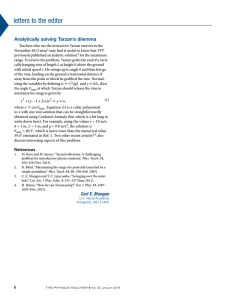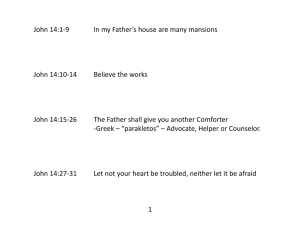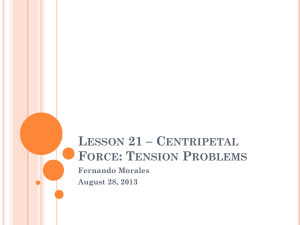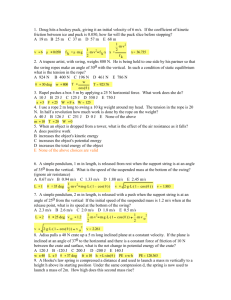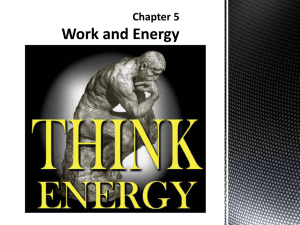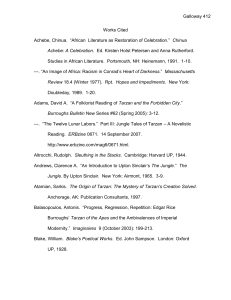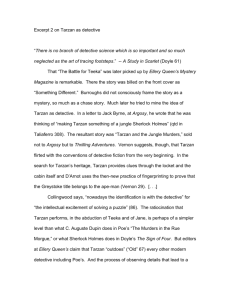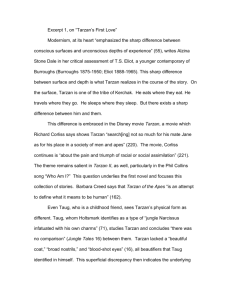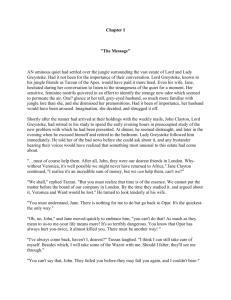Physics Clicker Questions: Forces and Motion
advertisement
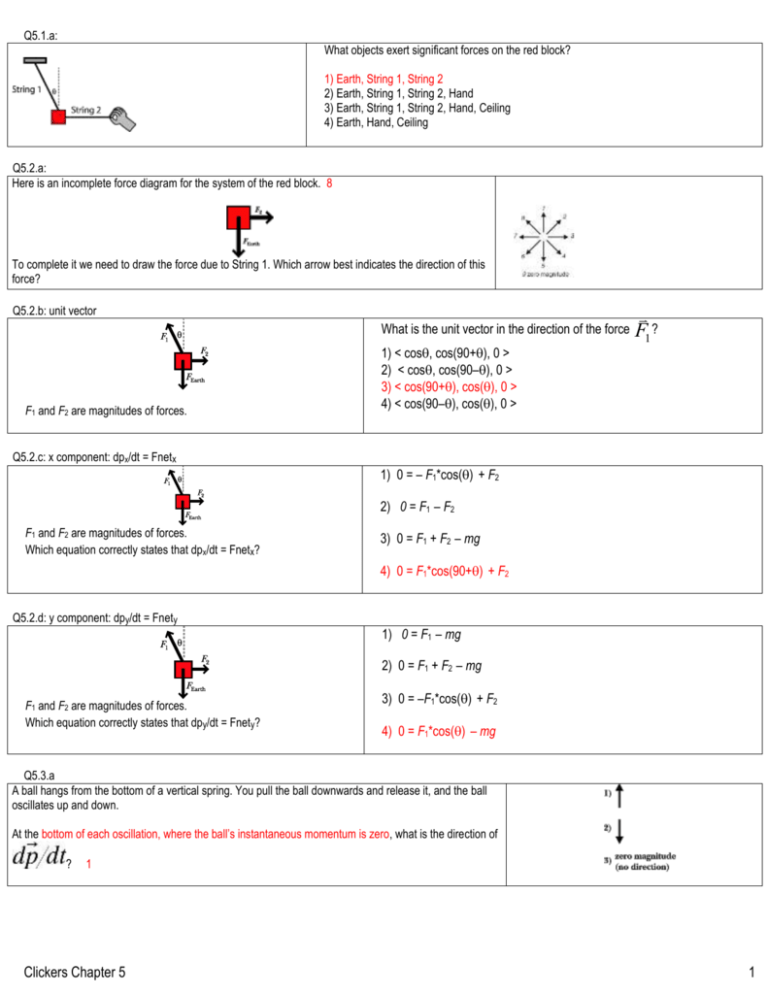
Q5.1.a: What objects exert significant forces on the red block? 1) Earth, String 1, String 2 2) Earth, String 1, String 2, Hand 3) Earth, String 1, String 2, Hand, Ceiling 4) Earth, Hand, Ceiling Q5.2.a: Here is an incomplete force diagram for the system of the red block. 8 To complete it we need to draw the force due to String 1. Which arrow best indicates the direction of this force? Q5.2.b: unit vector What is the unit vector in the direction of the force F1 and F2 are magnitudes of forces. F1 ? 1) < cos, cos(90+), 0 > 2) < cos, cos(90–), 0 > 3) < cos(90+), cos(), 0 > 4) < cos(90–), cos(), 0 > Q5.2.c: x component: dpx/dt = Fnetx 1) 0 = – F1*cos() + F2 2) 0 = F1 – F2 F1 and F2 are magnitudes of forces. Which equation correctly states that dpx/dt = Fnetx? 3) 0 = F1 + F2 – mg 4) 0 = F1*cos(90+) + F2 Q5.2.d: y component: dpy/dt = Fnety 1) 0 = F1 – mg 2) 0 = F1 + F2 – mg F1 and F2 are magnitudes of forces. Which equation correctly states that dpy/dt = Fnety? 3) 0 = –F1*cos() + F2 4) 0 = F1*cos() – mg Q5.3.a A ball hangs from the bottom of a vertical spring. You pull the ball downwards and release it, and the ball oscillates up and down. At the bottom of each oscillation, where the ball’s instantaneous momentum is zero, what is the direction of ? 1 Clickers Chapter 5 1 Q5.3.b A ball hangs from the bottom of a vertical spring. You pull the ball downwards and release it, and the ball oscillates up and down. At the bottom of each oscillation, where the ball’s instantaneous momentum is zero, what is the direction of ? 1 Q5.3.c: Which of the red arrows labeled 1, 2, or 3 represents the vector comet? , the change in the momentum of the Q5.3.d: At this instant, which components of The red arrow shows the rate of change of the comet's momentum when it is at location 2. are zero? 1) The parallel component 2) The perpendicular component 3) Both the parallel and perpendicular components 4) Neither component answer Q5.3.e: Which of the following statements is true? 1) If 2) If 3) If then we know that then could be either zero or nonzero then we know that Q5.4.a:The Moon travels in a nearly circular orbit around the Earth, at nearly constant speed. When the Moon is at location A, which components of are zero? 1) The parallel component 2) The perpendicular component 3) Both the parallel and perpendicular components 4) Neither component Q5.4.b:The Moon travels in a nearly circular orbit around the Earth, at nearly constant speed. Clickers Chapter 5 When the Moon is at location A, what is the direction of ?7 2 Q5.6.a: Tarzan swings from a vine. Q5.6.b: Tarzan swings from a vine. At the bottom of the swing, which components of are zero?? At the bottom of the swing, what is the direction of his ?1 1) The parallel component 2) The perpendicular component 3) Both the parallel and perpendicular components 4) Neither component Q5.6.c: Tarzan swings from a vine. At the bottom of the swing, what is the direction of the net force acting on Tarzan? 1 Q5.6.d: Tarzan swings from a vine. At the bottom of the swing, what objects exert forces on Tarzan (neglecting air resistance)? 1) Earth, vine 2) centrifugal force only 3) Earth and centrifugal force 4) Earth, vine, centrifugal force Q5.6.e: At the bottom of the swing, how does the magnitude of the force on Tarzan by the vine compare to the magnitude of the force on Tarzan by the Earth? 1) F vine > F Earth 2) F vine = F Earth 3) F vine < F Earth 4) Not enough info. Q5.6.f: Tarzan's mass: 100 kg. Length of vine: 5 m. Tarzan's speed: 13 m/s. What is the tension in the vine at this instant? 1) 980 N 2) 3380 N 3) 2400 N 4) 4360 N Clickers Chapter 5 3
